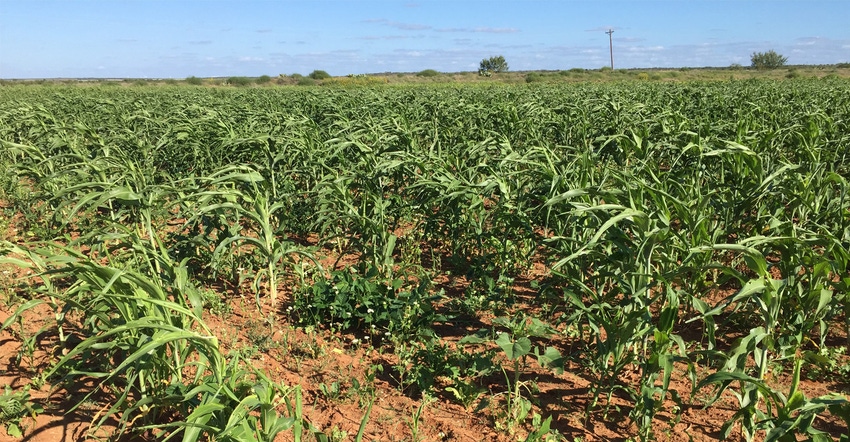
There’s a lot of talk in agriculture today about soil health, specifically the use and benefit of cover crops. As national interest grows, Texas A&M Soil & Crop Sciences staff field many questions regarding the topic. But is cover cropping for everyone?
“Our answers vary widely depending on where we are located and the farmer’s goals,” says Texas AgriLife Extension Agronomist Dr. Calvin Trostle, Lubbock. “For example, my reply to a typical question about cover cropping in the Texas High Plains, especially dryland (15-20 inches of annual rainfall) may differ considerably from my College Station colleagues, where rainfall is about double.
“In my area, I am much more likely to be concerned about potential moisture use by a cover crop. In fact, moisture loss is my primary concern for why cover cropping may not be a feasible endeavor for many producers, especially as you move further west across Texas.”
See, Timing determines species for fall cover cropping
While Trostle recognizes there is a major amount of observational conclusions about cover cropping and its effectiveness, he also cites a lack of long-term field trial data of five years or more, to determine pros and cons. And while Texas AgriLife may not have a lot of Texas data to share with producers, he says they’re working on it.
“Limited data has been collected on most facets of cover cropping,” says Trostle. “Though I believe, in time, cover cropping will find a place in some cropping systems, with available moisture as a key factor. The very real concern among producers and university staff is the use of moisture by the cover crop in the overall cropping system, especially in semi-arid regions.”
A question he says growers have to ask themselves is, can they afford the moisture loss? “Whether we can or not, and data is still needed on this, we cannot ignore the impact cover crops may have on moisture status.”
In drier regions like the Texas High Plains, the use of cover crops to protect the soil surface may outweigh the immediate need for soil health.
“Desired improvements in soil health attributes are dependent upon stopping wind erosion first,” says Trostle.
Before integrating cover cropping into soil management, especially if the goal is soil erosion protection, Trostle urges producers to consider the following:
Can I achieve many of the benefits attributed to cover crops by instead first focusing on reduction in tillage (no-till, strip till, reduced till)?
Am I doing what I can to preserve the stubble and residues I have from my current cropping to address some of the same goals as cover cropping?
The Texas agronomist encourages Texas farmers to consider how they can leave more — or all — of their stubble on the surface. “Let the roots be what improves soil structure and increases stable, long-term organic matter; and use the stubble to protect the soil surface from wind and water erosion.”
Cover cropping is credited for contributing the following attributes to the soil:
Reduced soil erosion,
Increased water infiltration rates and storage capacity,
Gradual increase in soil organic matter,
Better soil aggregation, and
Increased biological activity in the soil,
Trostle says, the above characteristics — especially in wind-blown West Texas — will not occur until the soil surface receives a blanket of residue, whether from a cash crop like wheat, grain sorghum, and corn and/or a cover crop, likely coupled with a reduction in tillage.
“I encourage growers to tinker a bit and experiment. But again, don’t neglect the consideration of how you might alter or reduce tillage and make use of your existing crop residues to effect similar outcomes in your cropping.”
Trostle says he and his colleagues are interested in learning from growers and their experiences and observations with cover cropping. He welcomes growers to contact their local and regional Texas AIM AgriLife staff.
For initial information on cover cropping, particularly for West Texas, log onto Texas A&M AgriLife at https://lubbock.tamu.edu/cover-crops/.
About the Author(s)
You May Also Like






